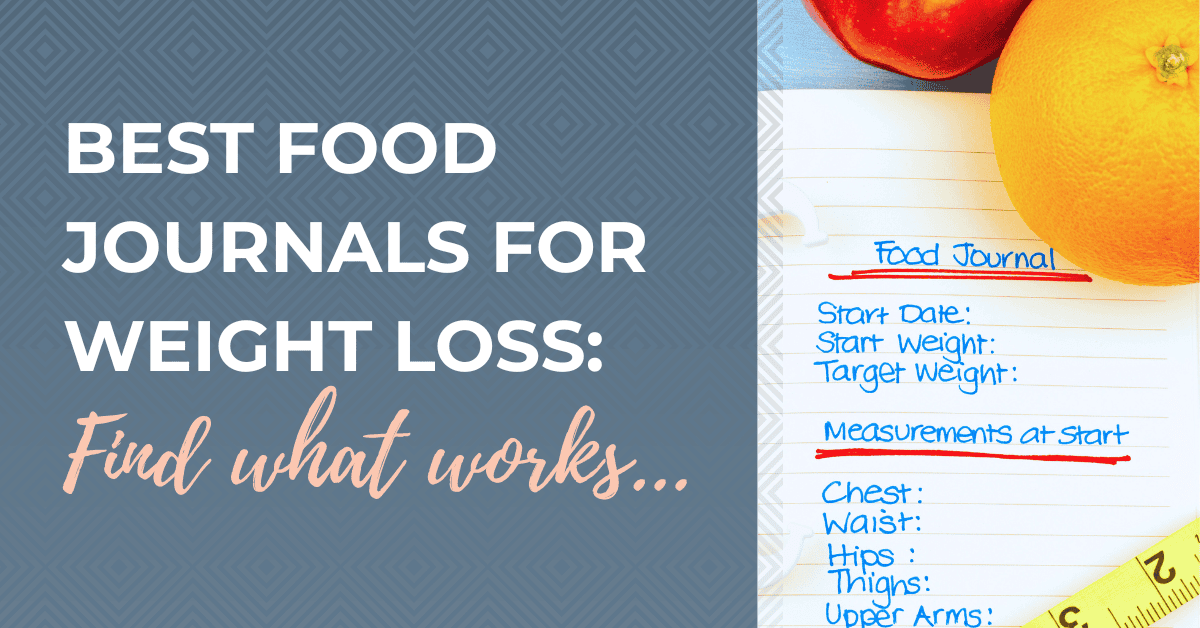
Best Food Journals for Weight Loss: Find What Works
When you’re trying to make changes to your eating habits, one of the simplest yet most powerful tools you can use is a food journal for weight loss. A food journal is simply a record of what you eat and drink each day, but it can do much more than that. By writing things down, you’ll start to notice portion sizes, uncover patterns, and even connect your moods with the choices you’re making around food.
In this post, we’ll walk through why journaling works, what to track, and the best formats to try—whether you love pen and paper, prefer an app, or want something in between. The goal isn’t perfection, but finding a format that helps you stay consistent and actually works for your lifestyle.
Why Keep a Food Journal for Weight Loss?
Keeping a journal is about so much more than just logging calories. When you keep track of what you eat, you create accountability. Seeing everything written down can be eye-opening, especially when it comes to portion sizes or those quick bites you’d otherwise forget.
A journal also helps you build awareness. You’ll notice things like mindless snacking, late-night grazing, or how much your “small” scoop of ice cream really adds up. Over time, this awareness can lead to healthier choices.
Another benefit is emotional insight. Writing down how you feel around meals—stressed, tired, bored—can highlight triggers that lead to overeating. Registered dietitians often recommend journaling because it allows you to identify patterns and even recognize specific food triggers that stall progress. With this kind of clarity, you can make changes that last.
What to Track in a Food Journal
You don’t need a complicated system—just the basics. Start with the foods and beverages you eat throughout the day. Add details like portion sizes, whether you’re using measuring cups or simply visual cues.
It also helps to note the time of day, what was happening around you, and how you were feeling. Were you truly hungry, or just stressed? Was it a planned meal, or did you grab something on the go?
By adding context—like mood, hunger levels, or activity—you’ll start to see how your daily food choices connect with the rest of your life. The key is to be accurate but not overcomplicate things. Simple notes can go a long way.
Different Formats of Food Journals
Pen-and-Paper Food Diaries
The classic food diary is still around for a reason—it works. Whether you grab a notebook or print out a template, writing things down by hand can feel grounding.
Pros: You don’t need an internet connection, there are no distractions from a screen, and it keeps things tactile.
Cons: It can be harder to analyze data later, and you may have to flip through pages to see trends.
Featured Pick: Printable Journal & Weight Loss Tracker
One of the easiest pen-and-paper options is the Printable Journal & Weight Loss Tracker. It’s structured with sections for daily food and beverage logging, portion sizes, and reflection prompts. It keeps things simple and organized without you having to design anything yourself.
👉 Want something ready-made and beautifully designed? Check out the Life Unbinged 100-Day Food Journal — created to help you stay consistent with space for meals, feelings, and reflection.
Digital Food Journals & Apps
If you prefer to track on your phone, digital tools can be a game-changer. Apps like MyFitnessPal, Noom, Ate, or See How You Eat come with searchable food databases, portion size estimates, and instant analysis.
Pros: They save time, estimate calories quickly, and can provide graphs or charts that show your progress.
Cons: They may encourage over-focusing on numbers, and for some people, constant calorie tracking can trigger stress or unhealthy patterns.
If you use these tools thoughtfully, they can be helpful for losing weight, but they’re not the right fit for everyone.
Hybrid Formats (Printable + Digital)
For those who like flexibility, hybrid options are the best of both worlds. You might use a bullet journal, a printable PDF you fill in digitally, or a spreadsheet synced with your favorite app.
Pros: You can customize them, blending structure with freedom. Maybe you jot down notes by hand but keep a digital log for portion sizes or activity.
This option often works well for people who want structure without feeling boxed in, and it can provide a healthy balance for tracking eating habits without going overboard.
Choosing the Right Food Journal for You
There isn’t one “best” journal—it’s about what works for your lifestyle. If you’re tech-savvy, you may love the instant features of apps. If you enjoy writing, a printable tracker could feel more natural.
Your history also matters. If you’ve struggled with obsessive tracking or an eating disorder, focus more on notes about hunger and feelings instead of calories. And if you’re not sure where to start, the Life Unbinged program can guide you toward the best option for your goals.
Most importantly, don’t stress about making your journal perfect. Consistency matters far more than precision.
Tips to Make Food Journaling Work Long-Term
- Record meals right after you eat—don’t wait until the end of the day.
- Be honest, even about little snacks and bites.
- Review your week and look for patterns in your eating habits.
- Use portion guides like measuring cups to stay accurate when possible.
- Focus on progress, not perfection. Missing a day doesn’t mean failure—just pick it back up.
These small habits add up to meaningful insight over time.
When Food Journaling May Not Help
While journaling is powerful, it’s not right for everyone. For those with a history of an eating disorder, detailed tracking may do more harm than good. In those cases, mindful eating—paying attention to hunger cues and enjoying food without judgment—may be a healthier alternative.
Remember, journaling is a tool, not a rule.
Conclusion
A food journal for weight loss can be an eye-opening way to build awareness, stay accountable, and uncover connections between your choices and how you feel. The best format—pen and paper, digital app, or hybrid—depends on your lifestyle and comfort level.
The key isn’t finding the “perfect” journal but finding one that helps you stay consistent. Over time, journaling can highlight specific food triggers, help you create healthier habits, and support long-term progress.
👉 Want a head start? Start today with the 100-Day Food Journal for a ready-made, beautifully designed option.

